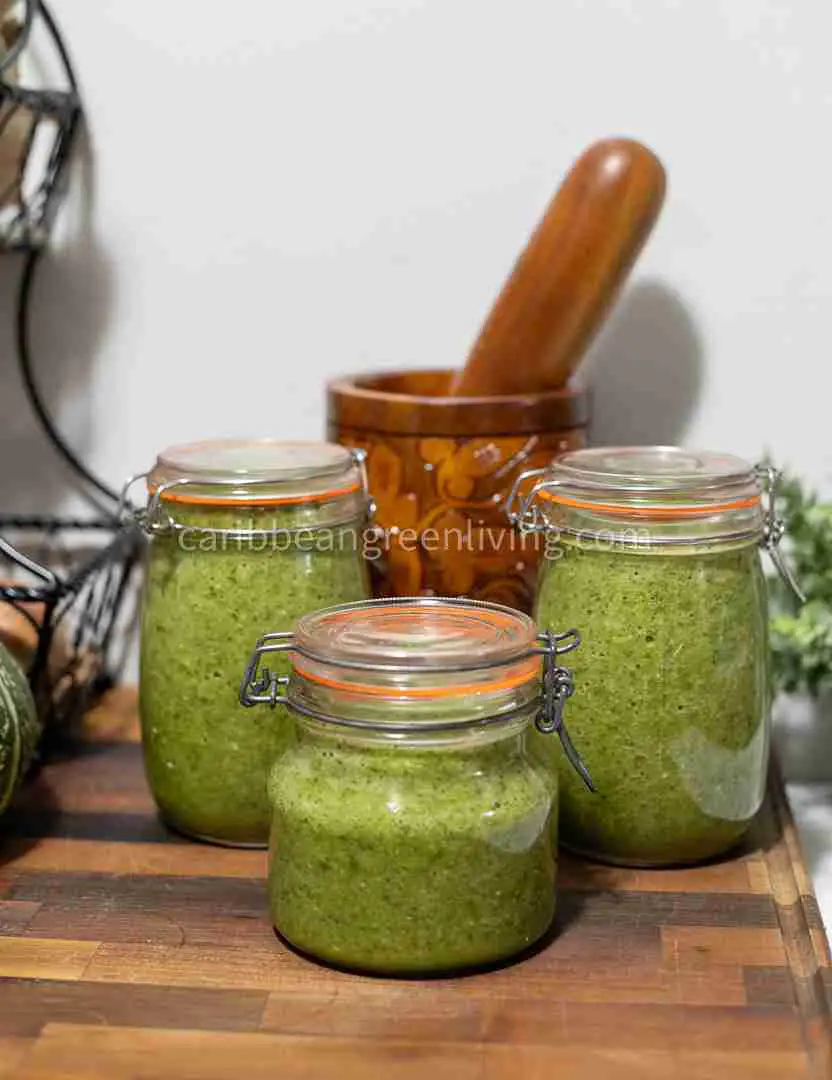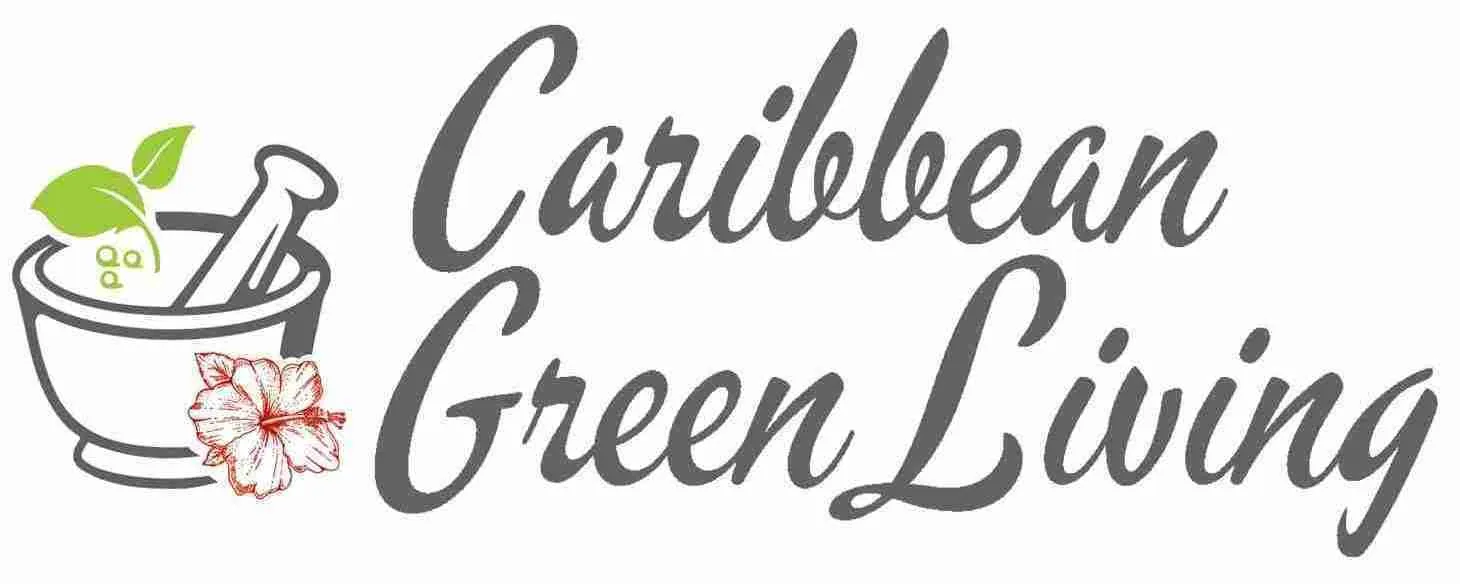What is Haitian Epis and Why Every Caribbean Kitchen Needs It
In Haitian cuisine, Epis (pronounced eh-peace) or Haitian Epis is the foundation of countless delicious meals. This fresh herb and spice seasoning blend infuses dishes with bold, vibrant flavors that capture the essence of the Caribbean. Whether you’re preparing rice, beans, meat, or seafood, Epis is the secret weapon every Caribbean kitchen keeps on hand.
Across the Caribbean islands, variations of this seasoning exist. While ingredients differ slightly from island to island, the concept remains the same: fresh herbs and spices blended together to create a versatile, flavorful base that elevates everyday cooking.
Like other Haitian pantry staples, Epis is essential for everyday cooking.

The Core Ingredients of Haitian Epis
A traditional Haitian Epis often begins with:
- Garlic
- Parsley
- Thyme
To this foundation, cooks add a mix of fresh vegetables and spices, such as:
- Scallions or chives
- Onion
- Green bell pepper
- Celery
- Cloves
- Vinegar or citrus juice (lemon or lime)
- Black pepper
- Hot peppers (Scotch bonnet or habanero, for heat)
These ingredients, when blended, form a fragrant, colorful paste that becomes the backbone of Caribbean cooking. In Haitian homes, a jar of Epis in the refrigerator is as essential as rice or beans in the pantry.

Variations and Modern Adaptations
Every cook has their own way of preparing Epis. Some add oil for a smoother texture, though it isn’t necessary for preservation and may even alter flavor depending on storage. Instead, a touch of lemon or lime juice and proper refrigeration keeps the blend fresh.
Salt, traditionally included, is now often left out. Many home cooks replace it with bouillon cubes or powders, though more health-conscious kitchens skip added sodium altogether. Keeping your Epis simple makes it easy to adjust later—whether with Worcestershire sauce, a splash of marinade, or dried spices.
Just as Djon Djon mushrooms bring depth to rice, Epis provides the backbone of flavor in countless dishes.
How to Use Epis
Epis is incredibly versatile. Here are just a few ways it shines:
- Meat & Poultry: Marinate chicken, beef, or pork for at least 15 minutes (or overnight) to let flavors penetrate deeply.
- Seafood: Fresh fish and shrimp gain irresistible flavor with even a quick rub of Epis.
- Rice & Beans: A spoonful of Epis transforms basic staples into fragrant, satisfying sides.
- Soups & Stews: Add it to broths, bouillon, or bean soups for a comforting Caribbean depth.
Epis is the perfect base for rich stews such as Slow Cooker Oxtail Stew with Lima Beans and Spinach. In short—if you can cook it, you can flavor it with Epis.
Why Make Epis at Home?
There are plenty of reasons to prepare your own Epis:
- Health & Freshness: Homemade blends allow you to control salt, oil, and additives while using fresh ingredients.
- Allergies & Sensitivities: You know exactly what’s inside.
- Flavor: Fresh herbs and spices provide a vibrant taste dried seasonings can’t always match.
For instance, parsley’s grassy freshness is completely different when fresh compared to dried. That difference is exactly why a grilled steak with fresh parsley sauce will always outshine one flavored only with dried herbs.

Essential Herbs & Spices for Epis
Start with these staples:
- Parsley
- Garlic cloves
- Fresh thyme
Then add depth with:
- Green bell pepper
- Leeks or onions
- Black peppercorns
- Whole cloves
These ingredients create a well-rounded blend that pairs beautifully with any dish. No Caribbean kitchen is complete without Epis, just like the staples featured in our Caribbean pantry guide

A Cultural and Nutritional Tradition
Growing up in the Caribbean, fresh herbs and spices were everywhere—used not only in cooking but also for medicinal purposes. That tradition continues today. Epis doesn’t just make food taste better; it’s packed with nutrients and antioxidants that support health and wellness.
In my own kitchen, I rely on Epis almost daily. Dried herbs and spices still play an important role, but nothing compares to the freshness and aroma of a homemade blend. Having a jar of Epis ready in the refrigerator saves time and guarantees rich flavor with every meal.
Frequently Asked Questions About Epis
1. What is Epis in Haitian cooking?
Epis is a fresh herb and spice seasoning blend used in Haitian and Caribbean cuisine. Made with garlic, parsley, thyme, onions, peppers, and citrus juice, it serves as the base for rice, beans, meats, seafood, soups, and stews.
2. How do you make Epis last longer?
Store Epis in a glass jar in the refrigerator. Adding lemon or lime juice helps preserve freshness. For longer storage, freeze Epis in ice cube trays and use as needed.
3. Should I use lemon juice or vinegar in Epis?
Both lemon juice and vinegar are excellent acidic agents for preserving Epis and balancing flavor. Lemon juice gives a fresher, brighter taste, while vinegar provides a stronger tang. If you use vinegar, white vinegar or apple cider vinegar are the best options—they won’t overpower the herbs and spices.
4. Can you make Epis without hot peppers?
Yes. While Scotch bonnet or habanero peppers add heat, they’re optional. You can make a milder version of Epis by leaving them out or replacing them with bell peppers.
5. What’s the difference between Epis and sofrito?
Both are herb and spice blends, but Epis is specific to Haitian and Caribbean cuisine while sofrito is common in Latin American cooking. The ingredients overlap, but flavors vary depending on the region.
6. What dishes can you use Epis in?
Epis can be used to season meats, poultry, seafood, beans, rice, and vegetables. It’s also excellent in soups, stews, and sauces for an authentic Caribbean flavor.
Ready to Try Epis?
Making your own Epis is simple and rewarding. With just a handful of fresh herbs and vegetables, you can create a seasoning blend that transforms your cooking. Keep a jar handy, and you’ll always be ready to infuse your dishes with the vibrant flavors of the Caribbean.
If you’re looking for ways to streamline your cooking, don’t miss our Haitian meal prep hacks where Epis plays a starring role.”
Here’s a recipe to get you started.

Haitian Epis (Fresh Herb and Spice Seasoning)
Equipment
- Mason jar (32 oz +)
- Blender or food processor
- Mortar and pestle (optional, for grinding spices)
- Knife & cutting board
Ingredients
- 1 cup fresh lime juice or substitute lemon juice
- 4 stalks scallions chopped
- 1 cup green bell pepper chopped
- 1 cup onion chopped
- 1 bunch fresh thyme stems removed
- 24 garlic cloves peeled
- 1 tablespoon ground black pepper or mixed peppercorns, freshly ground if possible
- 3 tablespoons kosher salt optional, adjust to taste or omit for low-sodium
- 1 tablespoon ground cloves
- 1 whole hot pepper Scotch bonnet or habanero, optional for heat
Instructions
Prep the ingredients
- Wash and pat dry all fresh herbs and vegetables.
- Peel garlic cloves.
- Grind whole peppercorns and cloves (if not pre-ground).
Blend the seasoning
- Add all ingredients to a blender or food processor.
- Blend until smooth (adjust with a little more lime juice if needed for consistency).
Store properly
- Transfer the mixture into a clean 32-oz mason jar (you may have extra to fill an 8-oz jar).
- Refrigerate immediately. Epis will stay fresh for 2–3 weeks with regular use.
Use hygienically
- Always use a clean spoon when scooping from the jar to prevent spoilage.
Notes
Quick Tips for the Best Epis
- Lemon or Lime Juice: Adds fresh brightness and acts as a natural preservative.
- Vinegar: White vinegar or apple cider vinegar can be used instead of citrus for a tangier flavor.
- Storage: For longer shelf life, freeze Epis in small portions (ice cube trays work perfectly).
- Consistency: If you prefer a thinner Epis, add extra citrus juice or vinegar until you reach your desired texture.
Notes:
This recipe makes enough to fill a 32-ounce mason jar, with a little extra that can be stored in an additional 8-ounce jar. If you add more lemon or lime juice for a thinner consistency, you may end up with even more. Keep in mind that fresh ingredients like scallions, garlic, and peppers vary in size, so the final yield may differ slightly each time. If you prefer a pourable consistency, simply add extra citrus juice (or vinegar) to liquefy your Epis to your liking.
Nutrition
Please keep in mind that nutritional information is a rough estimate and can vary greatly based on the products used.
Nutrition info is automatically generated and provided as a courtesy and as an estimate only.







Are you sure of the 1 tablespoon of ground clove? This seems like the clove would overpower everything in the recipe.
The amount of ground clove will not empower the taste because of the amount of garlic, scallion and thyme and lemon juice. These ingredients are very strong in terms of taste and aroma. You can reduce the 1 tablespoon of ground clove to 1 teaspoon. Also, cloves is essential to Haitian cooking and have many great health benefits. Thanks for your comment.